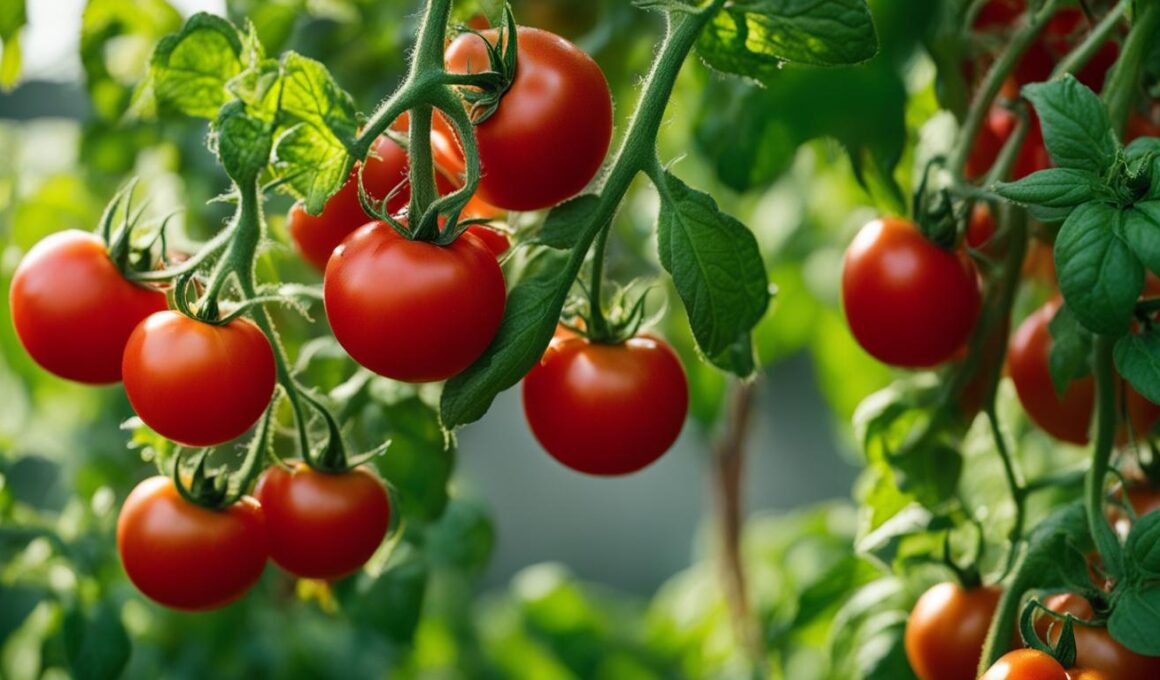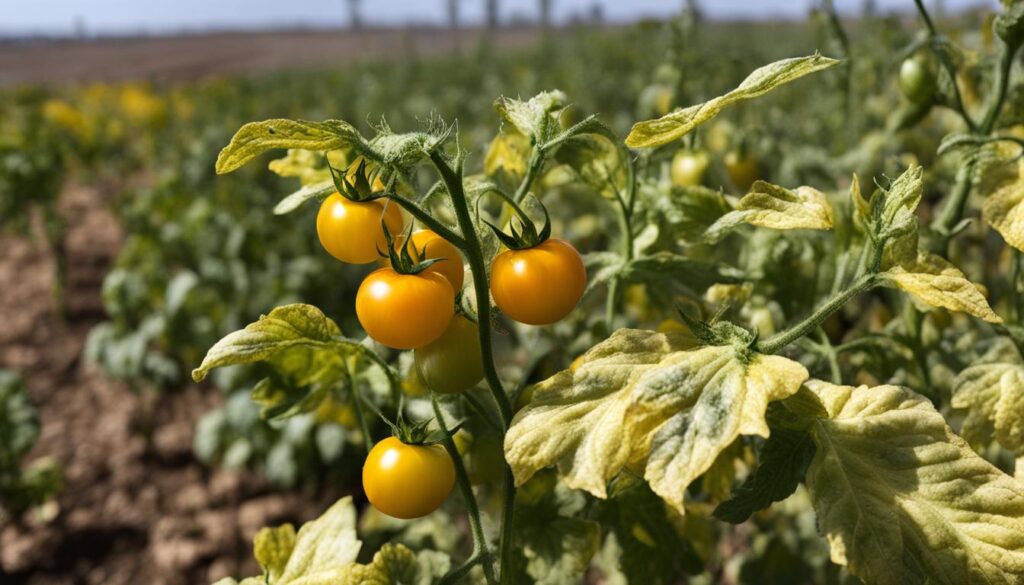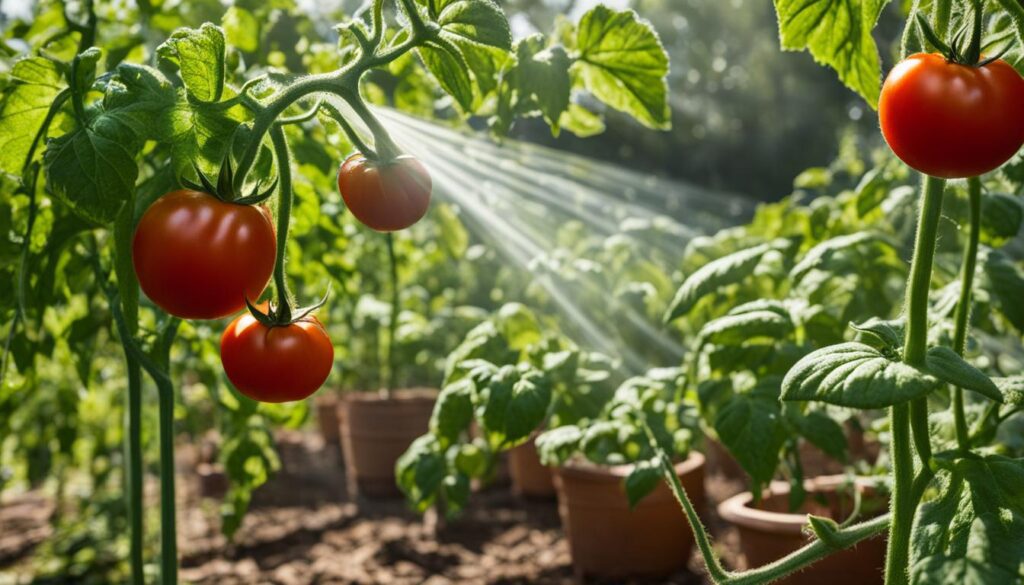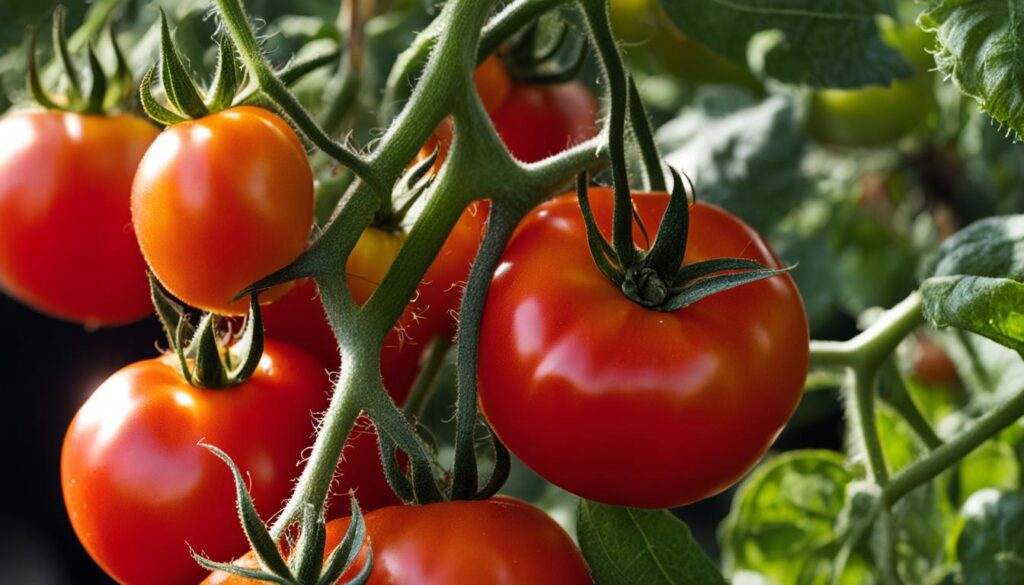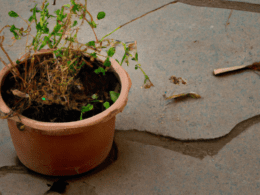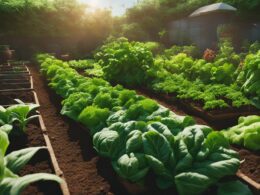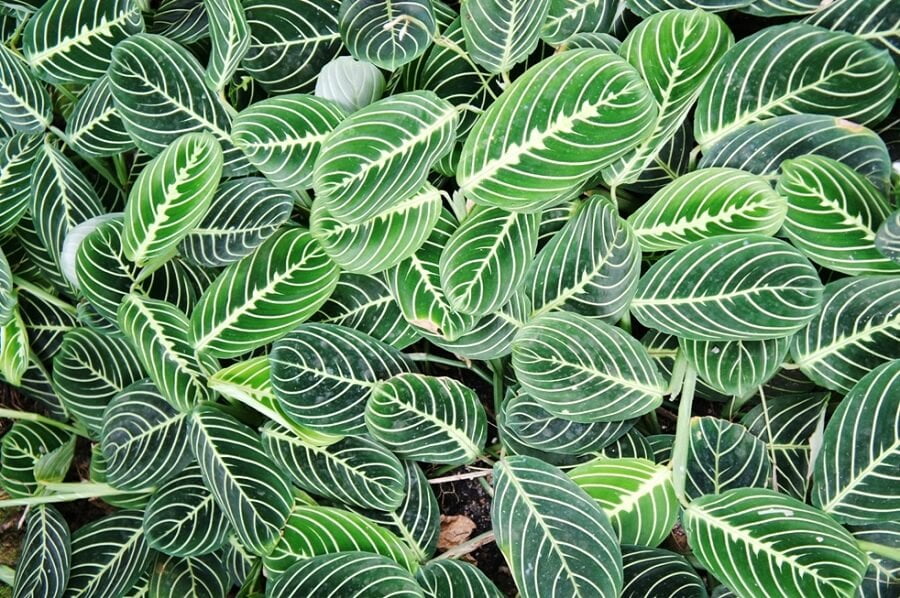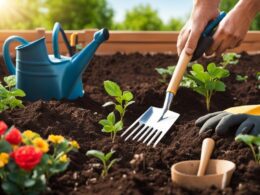Tomato plants are a popular choice for gardeners due to their delicious fruit and versatility in various climates. However, tomato leaf burn, especially sunscald, can pose a challenge to maintaining healthy plants. Sunscald occurs when the leaves are exposed to direct sunlight during hot weather, resulting in pale blotches on the fruit and damage to the foliage. In this guide, we will explore effective strategies for preventing tomato leaf burn and ensuring the vitality of your tomato plants.
Key Takeaways:
- Protect tomato plants from direct sunlight to prevent sunscald.
- Use mulch, organic fungicides, and disease-resistant tomato varieties to reduce the risk of leaf burn.
- Harvest tomatoes at the breaker stage to avoid sunscald.
- Avoid excessive pruning and provide shade cover for the fruit.
- Evaluate sunscalded tomatoes for edibility based on the severity of damage.
Causes of Tomato Leaf Burn
Tomato leaf burn, including the condition known as sunscald, can occur due to various factors. Excessive sunlight exposure is a primary cause of leaf burn, particularly in areas with longer and hotter days. When tomato leaves are exposed to intense sunlight without any protection, they can suffer from sunscald. Additionally, the removal of foliage due to disease can also contribute to leaf burn, as it exposes the fruit to sudden and direct sunlight. While removing diseased foliage is necessary to prevent the spread of diseases, it is important to be cautious about the potential risk of sunscald as a result of increased sun exposure.
Another factor that can contribute to leaf burn is the spread of diseases. Overhead watering should be avoided, as it can lead to water-related diseases on the foliage. These diseases can weaken the leaves, making them more susceptible to damage from sunlight. It is essential to maintain a balance between providing enough water for the plants’ needs and avoiding excessive moisture that can promote disease development.
It is crucial to understand the causes of tomato leaf burn, as this knowledge can help gardeners take preventive measures to protect their plants. By being aware of the potential risks, such as excessive sunlight exposure and foliage removal, gardeners can effectively minimize the occurrence of leaf burn and promote healthier tomato plants.
“Excessive sunlight exposure and foliage removal are common causes of tomato leaf burn, particularly sunscald. It is important to protect tomato plants from intense sunlight and avoid exposing the fruit to direct rays.” – Expert Gardener
Summary:
- Tomato leaf burn, including sunscald, can occur due to excessive sunlight exposure.
- Foliage removal, often done to prevent disease spread, can also expose the fruit to sunscald.
- Water-related diseases on the foliage can weaken the leaves, making them more susceptible to sun damage.
Understanding the causes of tomato leaf burn is essential for implementing preventive measures and ensuring the health of tomato plants.
| Causes of Tomato Leaf Burn | Preventive Measures |
|---|---|
| Excessive sunlight exposure | Install shade cloth during the hottest parts of the day |
| Foliage removal | Avoid excessive pruning during peak summer |
| Water-related diseases | Ensure proper watering practices and avoid overhead watering |
Types of Tomato Leaf Burn
Tomato leaf burn can manifest in different ways, affecting both the fruit and the leaves. One common type of leaf burn is sunscald on the fruit. This condition appears as pale, white, or grayish blotches on the tomato, which can progress to a paper-like skin or sunken areas. In severe cases, black mold may develop on sunscalded fruit, rendering it inedible. It is important to carefully inspect tomatoes for any signs of sunscald before consumption.
Another type of tomato leaf burn is sunscald on the leaves themselves. This typically presents as white or brown spots on the foliage. Over-pruning can also contribute to sunscald, as it removes the natural shade provided by the leaves, exposing the fruit to direct sunlight. It is crucial to strike a balance between pruning for airflow and maintaining adequate foliage cover to protect against leaf burn.
To better understand the differences between sunscald on the fruit and leaves, refer to the table below:
| Type of Tomato Leaf Burn | Symptoms |
|---|---|
| Sunscald on Fruit | Pale, white, or grayish blotches Paper-like skin or sunken areas Possible black mold development |
| Sunscald on Leaves | White or brown spots Can be caused by over-pruning |
Understanding the types of tomato leaf burn is crucial for effective prevention and management. By identifying the specific symptoms and knowing their causes, gardeners can take appropriate measures to protect their tomato plants and ensure a successful harvest.
Choosing the Right Tomato Plants to Minimize Leaf Burn
When selecting tomato plants for your garden, it is essential to consider their resistance to leaf burn, particularly sunscald. By choosing the right tomato varieties, you can minimize the risk of leaf burn and ensure the health and productivity of your plants.
One key factor to consider is the sunscald resistance of the tomato variety. Some tomato plants, such as Red Snapper and Hossinator, are known for their higher resistance to sunscald. These varieties are determinate tomatoes, which means they have a more compact growth habit and require minimal pruning. By reducing the amount of pruning needed, you can help protect the fruit from direct sunlight and lower the risk of leaf burn.
Another consideration is the size of the tomatoes. Larger beefsteak tomatoes are more susceptible to sunscald due to their longer growing time and larger surface area. If you live in an area with exceptionally hot summers, it may be wise to choose smaller cherry tomatoes. These smaller varieties have a lower risk of sunscald and can be a better option for ensuring a bountiful harvest.
Gardeners’ Recommended Tomato Varieties for Sunscald Resistance
| Variety | Tomato Type | Sunscald Resistance |
|---|---|---|
| Red Snapper | Determinate | High |
| Hossinator | Determinate | High |
| Sweet 100 | Cherry | Medium |
| Sungold | Cherry | Medium |
| Big Boy | Beefsteak | Low |
By selecting tomato varieties with higher sunscald resistance and considering the size of the tomatoes, you can significantly reduce the risk of leaf burn and enjoy a successful tomato-growing season. Remember to provide appropriate care and follow preventive measures to further protect your plants from leaf burn.
Preventive Measures for Tomato Leaf Burn
To minimize the risk of tomato leaf burn, particularly sunscald, there are several preventive measures you can take. These measures will help maintain healthy tomato plants and ensure a bountiful harvest. Here are some key strategies:
- Install Shade Cloth: Providing shade cover for your tomato plants during the hottest parts of the day can protect them from the direct rays of the sun. This will help prevent sunscald and maintain the overall health of the plants. Simply install shade cloth above the plants, ensuring they still receive enough sunlight for growth.
- Moderate Pruning: While pruning is important for maintaining airflow and preventing the spread of diseases, excessive pruning can increase the risk of sunscald. Avoid over-pruning during the peak of summer when the sun is at its strongest. Leaving sunburned leaves on the plant can actually provide some protection to the delicate fruit.
- Use Organic Pest and Disease Control: By implementing organic pest and disease control methods, you can proactively prevent the spread of diseases that can affect the foliage. This will help keep your tomato plants healthy and reduce the chances of sunscald.
- Choose Resistant Tomato Varieties: Selecting tomato varieties that are resistant to sunscald can significantly reduce the risk of leaf burn. Look for determinate tomato varieties that require minimal pruning, as they provide natural shade for the fruit. Smaller cherry tomatoes are also a great choice for areas with exceptionally hot summers, as they have a lower risk of sunscald.
By implementing these preventive measures, you can ensure the well-being of your tomato plants and minimize the risk of leaf burn. Remember to regularly monitor your plants for any signs of sunscald or other issues and take appropriate action if necessary.
Quote:
“Preventing tomato leaf burn is essential for maintaining healthy tomato plants and ensuring a bountiful harvest.”
Table: Tomato Varieties Resistant to Sunscald
| Tomato Variety | Characteristics |
|---|---|
| Red Snapper | Determinate tomato variety with minimal pruning requirements |
| Hossinator | Determinate tomato variety resistant to sunscald |
Evaluating and Using Sunscalded Tomatoes
Sunscalded tomatoes can still be edible, depending on the severity of the damage. It’s important to carefully evaluate the tomato before deciding whether to use it or discard it. Here are some signs to look for when determining the edibility of sunscalded tomatoes:
- If the sunscald is limited to blotchy patches on the tomato that haven’t blistered, the tomato is safe to eat once the affected area is cut around. Simply remove the discolored portion of the tomato and use the remaining flesh in your recipes.
- However, if the tomato has sunken or blistered areas with deep cracks exposing the flesh, it is best to discard it. These deep cracks can be an entry point for bacteria and other pathogens, which can make the tomato unsafe to consume.
- Mold growth on sunscalded tomatoes is also an indicator that they shouldn’t be consumed. If you notice any signs of mold, it’s best to err on the side of caution and not use the tomato.
Remember, the quality and taste of sunscalded tomatoes may be affected, even if they are still safe to eat. So, if the damage is extensive and the flavor is compromised, it may be more enjoyable to use the tomato in cooked dishes rather than eating it raw.
By carefully evaluating sunscalded tomatoes and following these guidelines, you can make informed decisions about their use in your culinary creations.
How Can I Prevent and Address Tomato Leaf Burn in My Garden?
To prevent and address tomato leaf burn in your garden, there are several solutions for burnt tomato leaves that you can try. First, make sure your plants are getting enough water, but not too much. Use a soaker hose to water slowly and deeply. Also, consider using mulch to maintain soil moisture and prevent soil splash onto the leaves.
Conclusion
Preventing tomato leaf burn, particularly sunscald, is essential for maintaining healthy tomato plants. By taking proactive measures and following these guidelines, you can significantly reduce the risk of leaf burn and ensure a bountiful harvest.
Providing shade cover for the fruit is crucial in protecting it from direct sunlight. Consider using a shade cloth during the hottest parts of the day to shield your tomatoes while still allowing them to receive enough sunlight.
Avoiding excessive pruning is another key preventive measure. While pruning is necessary, overdoing it can expose the fruit to the sun. Remember that leaving some sunburned leaves can actually provide a protective barrier for delicate fruit.
Additionally, selecting resistant tomato varieties can play a significant role in minimizing leaf burn. Opt for sunscald-resistant varieties like Red Snapper and Hossinator. They require minimal pruning, reducing the risk of sun exposure.
Lastly, properly evaluating sunscalded tomatoes is crucial for the quality and safety of your harvested fruit. While some sunscalded tomatoes can still be consumed, others may need to be discarded. Look for signs like pale patches, sunken or blistered areas, and mold growth. When in doubt, it’s best to err on the side of caution.
By following these preventive measures and properly evaluating your tomatoes, you can enjoy thriving plants and a successful harvest. Take care of your tomato plants and they will reward you with delicious, healthy fruit.
FAQ
What is tomato leaf burn and what causes it?
Tomato leaf burn, specifically sunscald, occurs when the leaves are exposed to excessive sunlight without protection. It can be caused by direct sunlight, especially after foliage removal due to disease. Sunscald is more common in areas with longer and hotter days.
How does tomato leaf burn affect the fruit and leaves?
Sunscald on the fruit appears as pale, white or grayish blotches and can progress to a paper-like skin or sunken areas. Black mold may develop on sunscalded fruit. Sunscald on the leaves can cause white or brown spots. Over-pruning can also lead to sunscald, as it removes the natural shade provided by foliage.
Are certain tomato varieties more resistant to leaf burn?
Yes, some tomato varieties are more resistant to sunscald, such as Red Snapper and Hossinator. These varieties are determinate tomatoes and require minimal pruning, which helps reduce sun exposure. Larger beefsteak tomatoes are more susceptible to sunscald, while smaller cherry tomatoes have a lower risk.
What preventive measures can be taken to minimize leaf burn?
Installing a shade cloth during the hottest parts of the day can provide protection from direct sunlight. Pruning should be done in moderation to avoid exposing the fruit to the sun. Leaving sunburned leaves can actually protect delicate fruit. Avoid over-pruning during the peak of summer and leave crispy leaves on the plant unless affected by fungal diseases.
Can sunscalded tomatoes still be used?
It depends on the severity of the damage. If sunscald is limited to blotchy patches that haven’t blistered, the tomato is safe to eat once the affected area is cut around. However, if the tomato has sunken or blistered areas with deep cracks exposing the flesh, it is best to discard it. Mold growth on sunscalded tomatoes is also an indicator that they shouldn’t be consumed.





